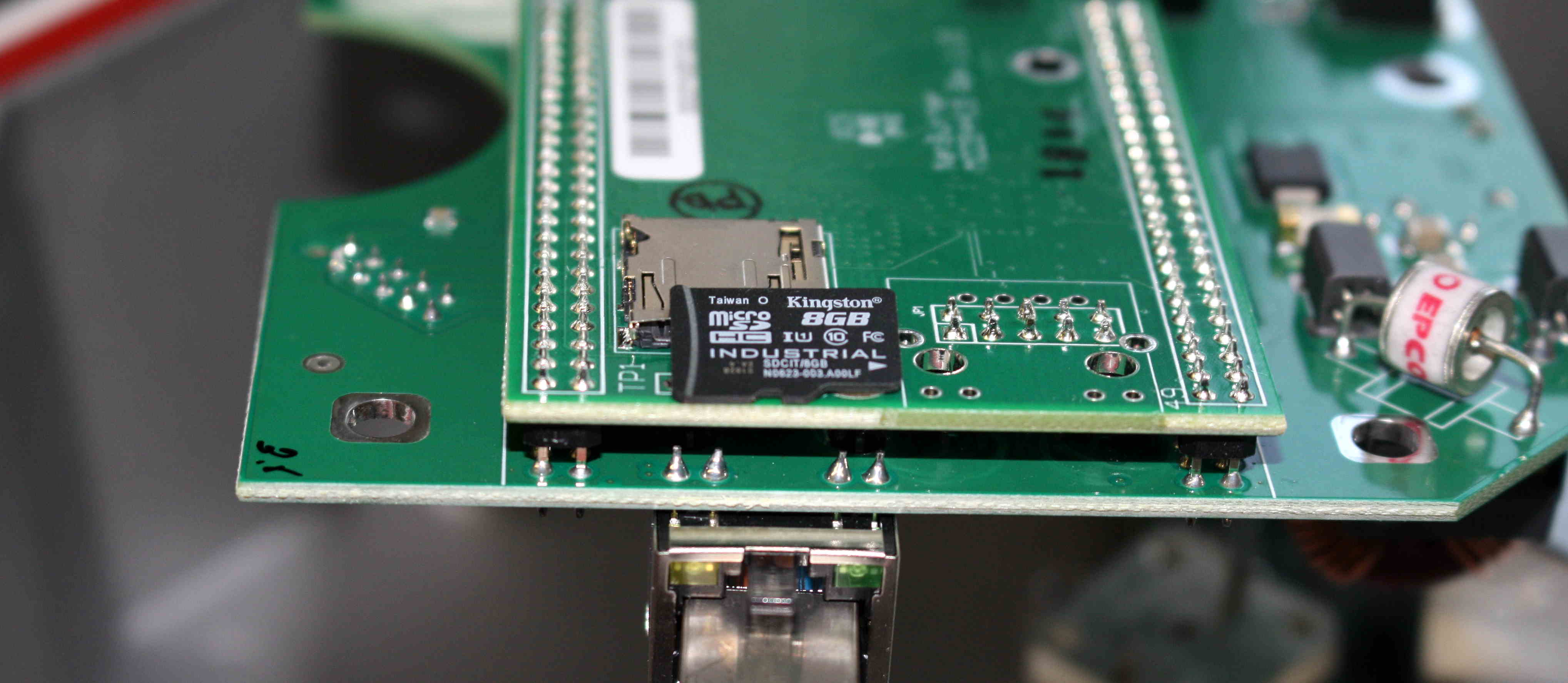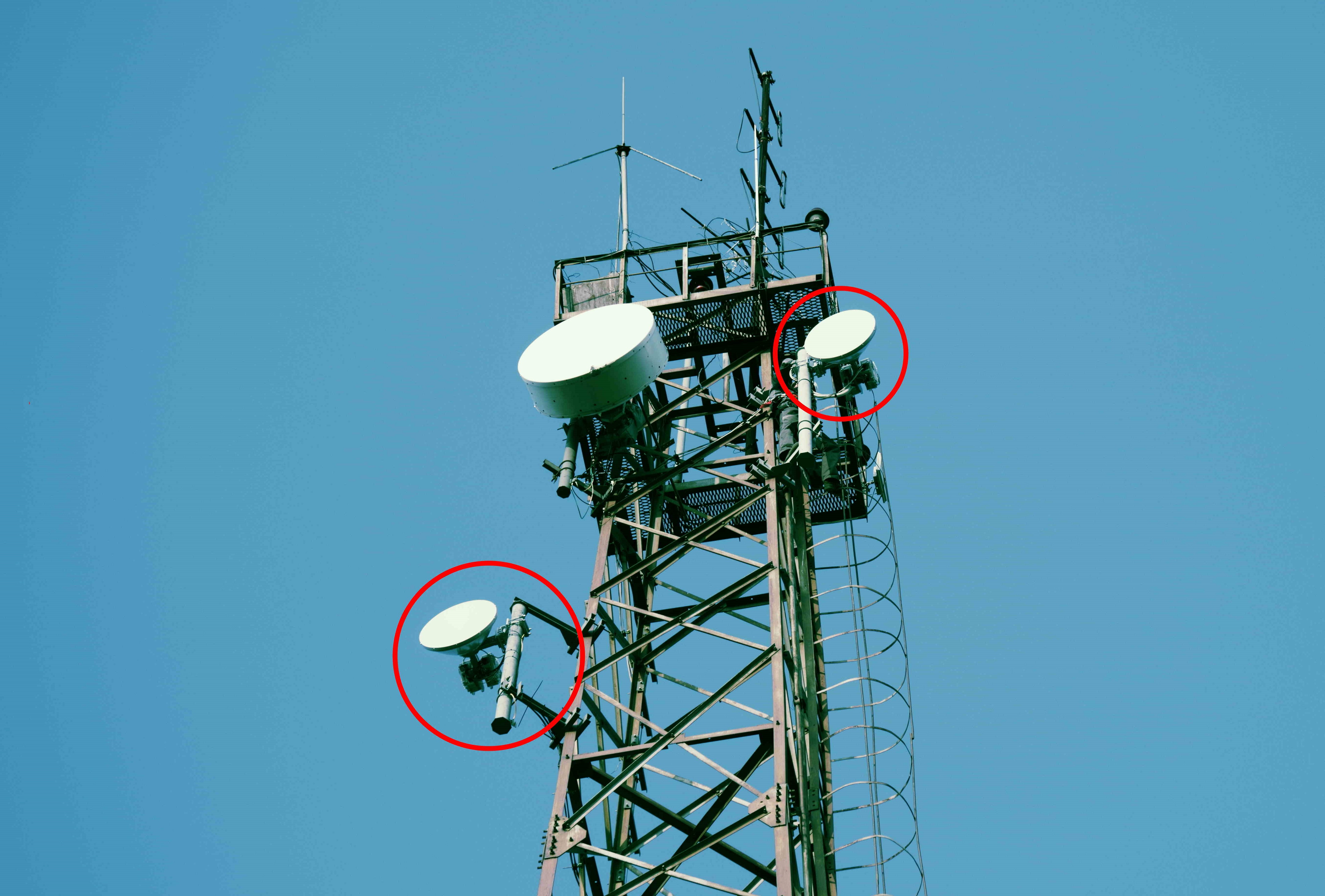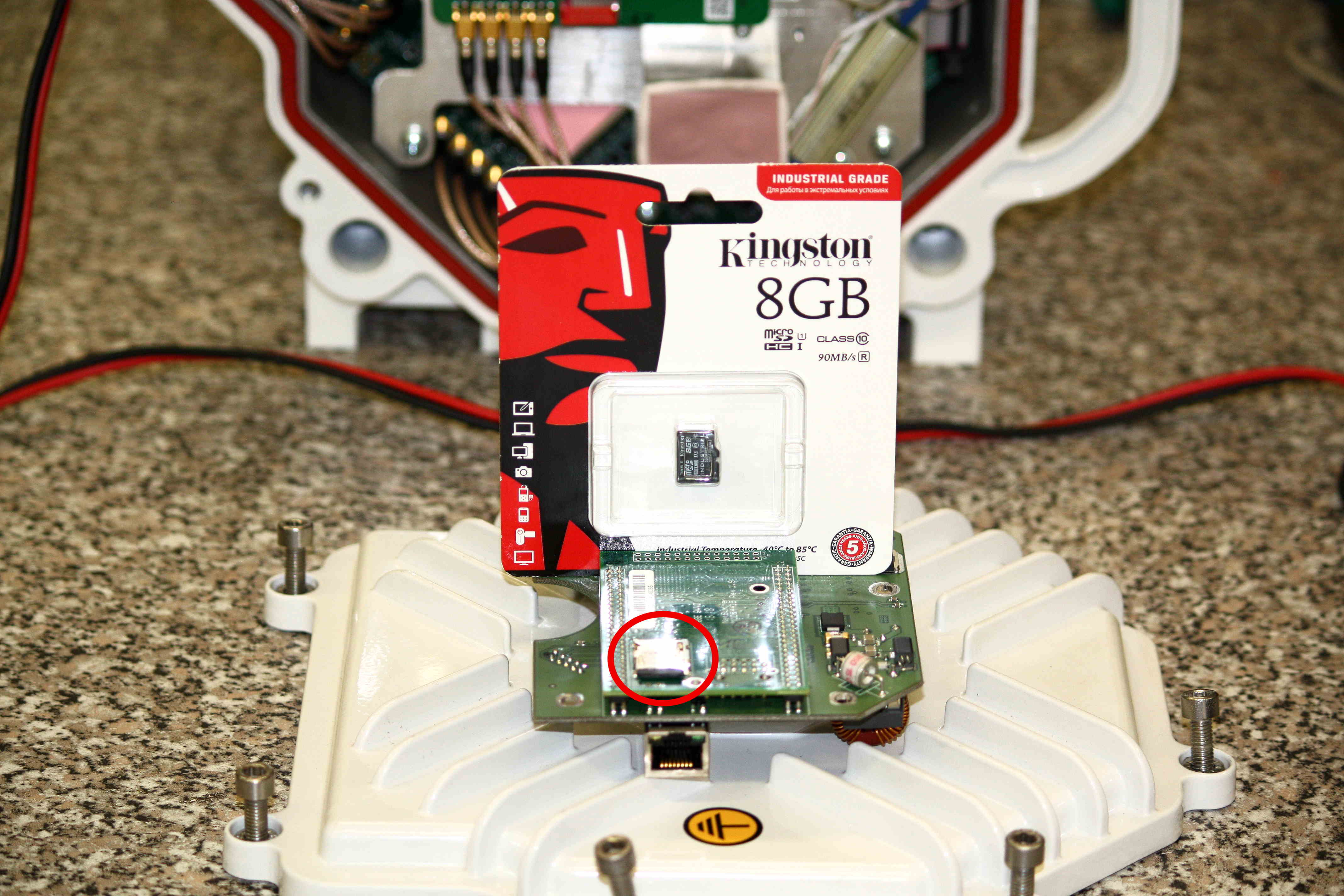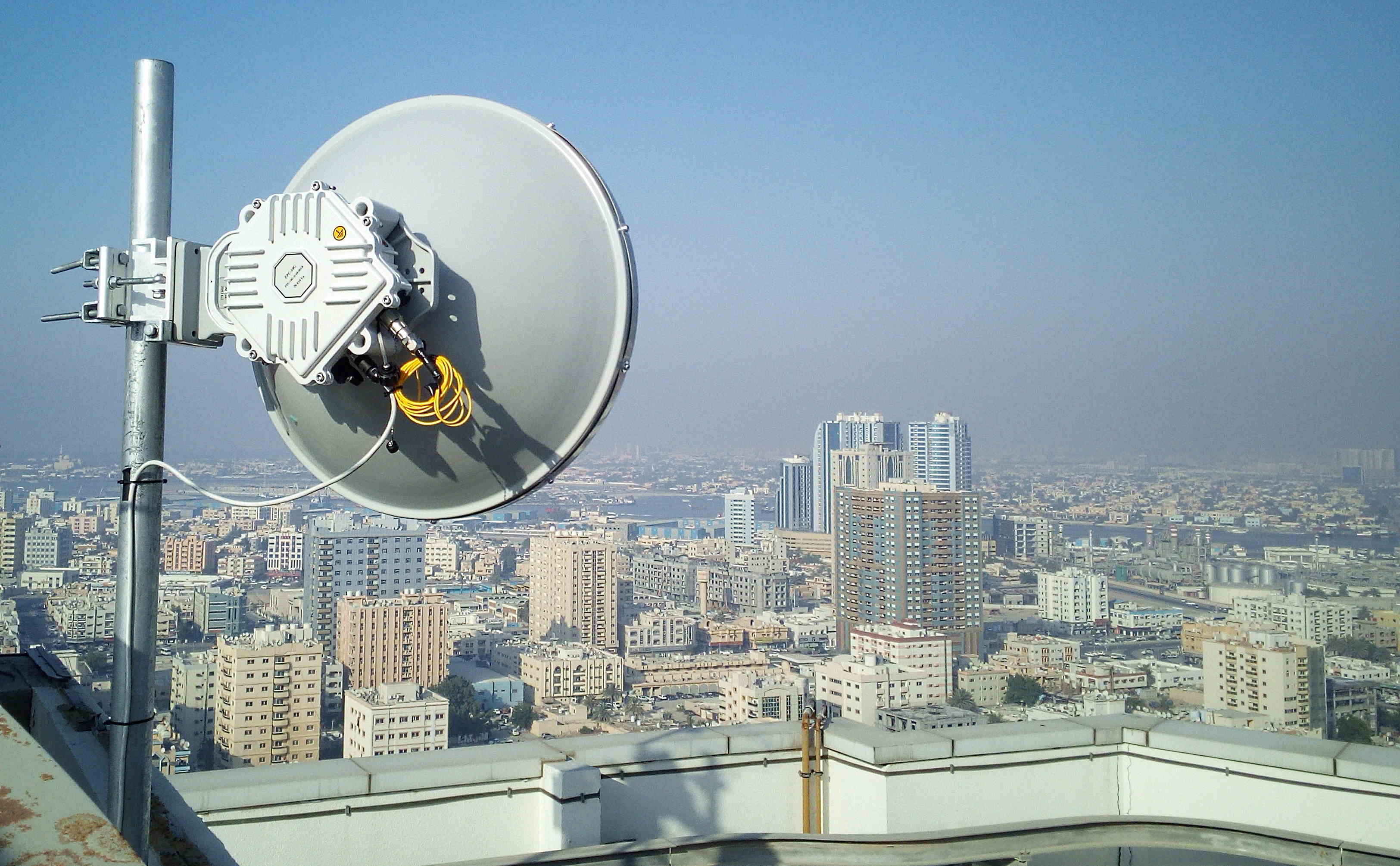
Case Study - Millimeter Wave Broadband
At the turn of 2016, that is, exactly when the Kingston industrial-grade memory cards from our review appeared, a qualitative leap in the speed of backbone wireless radio links was preparing for the telecommunications market. The second generation of radio relay stations at a speed of 1 Gbit / s, dominant in 2010-2015, was supposed to pass the baton to third-generation radio links capable of operating in the 10 Gigabit Ethernet standard and transmitting data at a speed of 10 Gbit / s.

Radio bridges 2x20 Gbit / s through the Yenisei in Igarka. Source: LLC DOK
By the way, to create a radio channel with transmission characteristics similar to that of an optical cable, at least a couple of things were needed on a global scale: creating a new element base for 10 Gigabit Ethernet (10GE) wireless communication and allocating a wide enough frequency band where you can fit it 10 Gigabit data stream. This range was the set of frequencies 71-76 / 81-86 GHz, which with the light hand of the American regulator FCC was allocated in the USA in 2008. Soon, this example was followed by regulators of almost all countries of the world, including Russia (the range 71-76 / 81-86 GHz is allowed by the RF Ministry of Communications for free use since 2010).
In 2016, the MMIC chips (microwave monolithic integrated circuits), which are capable of modulating the QAM 256 radio signal for a data transfer rate of 10 Gb / s, finally appeared on the world market, and the race began - who will be the first to launch commercial models of radio relay equipment of the class on the market 10GE. Surprisingly, the first production model of such radio links was created in Russia in the St. Petersburg engineering company DOK and shown at the World Mobile Congress (MWC 2017) in Barcelona in 2017. Well, why not? - All the same, Alexander Popov invented the radio precisely in St. Petersburg (although this primacy is sometimes attributed to Marconi or Tesla).
Today, in 2019, 10GE wireless radios have become the de facto industry standard. Due to its high throughput, one 10 Gbit / s radio relay line often serves as a communications service for a whole residential microdistrict or a large industrial zone. Cellular operators willingly use 10GE radio links for backbones between 4G / LTE base stations, as they provide synchronization of base stations with the reference clock of the data center of a mobile operator, which is important for transferring multimedia traffic to smartphones and tablets. In addition to digital telephony and Internet access via a wireless 10 Gigabit Ethernet channel, hundreds of digital TV channels are broadcast, and there is a stream of data from CCTV cameras.
“- It’s all interesting in its own way,” the Habr reader will say, ““ but what does the Kingston memory card have to do with it? ”But now we will move on to this.
"Black box" inside the radio relay equipment
The Industrial Temperature microSD UHS-I memory card is installed in the PPC-10G radio relay station control module manufactured by the DOK as a file storage for configuration files and equipment status logging. All critical operation parameters are written on the card around the clock: the data transfer speed in the channel, the received signal level (RSL, Receive Signal Level), the temperature in the case, power parameters and much more. According to the manufacturer’s rules, the card must store such data for at least a year of operation of the equipment, then the latest data is overwritten over the old. Practice has shown that to comply with this requirement, a memory card of 8 GB is sufficient, so now the DOK company uses such cards. A set of two radio relay stations requires two Industrial Temperature microSD UHS-I memory cards, as a card is placed in each of them.

PPC-10G radio relay case, module with Kingston industrial memory card. Source: LLC DOK
A network engineer or administrator of a telecom operator periodically downloads logs from a memory card via FTP or views them in the web interface. Thus, statistics are estimated on the channel capacity, the stability of the internal components of radio relay stations. Information from the logs is especially important in the event of equipment failure or its transition to a low data rate mode.
Using the information from the logs provided by the customer, the technical support specialists of the PKD can diagnose the problem and suggest a way to resolve it as quickly as possible. For example, seeing that from a certain moment the received signal level (RSL) has changed, we can conclude that, most likely, the antenna pointing at each other was “lost”. This sometimes happens after hurricane-force winds, ice falling on the antenna from the upper structures of the telecommunications tower.
Telecommunications operators, purchasing quite expensive 10-gigabit radio-relay equipment, rely on the high reliability of all its components on the principle of "Set and forget." A memory card is no exception. An important factor here is the complexity of access to equipment for repair work. In the vast majority of cases, radio links in the range 71-76 / 81-86 GHz are installed on telecommunication towers, on the roofs of buildings and structures. It is clear that climbing in order to replace components with an icy tower in the conditions of the Russian winter is not an easy and dangerous business. Although the memory card is not a critical component in the PPC-10G stations, and if it fails, the radio relay line will continue to work, but it will lose the ability to record the status logs of the equipment and the communication channel. Therefore, the reliable operation of Kingston Industrial Temperature microSD UHS-I cards is important both for the manufacturer of radio links and for customers represented by telecom operators.

Close-up - PPC-10G station module with Kingston industrial memory card. Source: LLC DOK
“We have been designing and manufacturing radio relay stations in Russia for more than 10 years, and during this time we tried memory cards from different manufacturers. Some cards worked for a year, some for a couple of years, but then they had to be formatted remotely, and sometimes even this did not help, which caused complaints from buyers of our equipment. When the 10-gigabit model PPC-10G was launched into production in 2016, we turned for advice to our supplier, Superwave (St. Petersburg). They advised Kingston's industrial memory cards, saying there would definitely be no problem with them. Since then, not a single Kingston card has failed, and we have already installed about a thousand of them. And despite the fact that telecommunication equipment is operated year-round in the open air under very harsh conditions, ”said Daniil Korneev, director of the DOK company.
How to bypass the temperature limits of memory cards and other components
If you look at the page with the technical specifications of Industrial Temperature microSD UHS-I memory cards, you can see the limits of their guaranteed temperature range of operation and storage: from -40 ° C to + 85 ° C. But what if radio relay stations are operated in the Russian Arctic, where at night it can easily be -50 ° C or even lower? Or, conversely, somewhere in Africa?

Radio relay station PPC-10G with a Kingston memory card in the city of Tarko-Sale in the Purovsky district of the Yamalo-Nenets Autonomous Okrug. Source: LLC DOK
An automatic heater is provided in winter relay stations for winter conditions, providing even in severe frosts the temperature inside the case is above 0 ° C. In the case of a "cold start", - by analogy with the launch of automotive technology in the Arctic - the heater is the first to start. It blocks the inclusion of electronic components until the temperature inside the station building rises to an acceptable limit.
We are now going to the upper limit of the temperature range. Considering that each of the manufacturers, including Russian ones, seeks to sell their radio links around the world, the equipment should work normally under scorching sunlight. For tropical modification, an extended system of radiators is installed in the DOK stations, distributing heat throughout the equipment case.

The PPC-10G radio relay station (of course, with a Kingston memory card) is being installed on a high-rise building in the Emirates. Source: LLC DOK
“As a comment on Kingston memory cards, I want to note that the lower storage temperature limit of -40 ° C in their specification is given with a large margin. It has repeatedly happened to our customers from the northern regions of Russia that the radio relay stations were turned off at lower temperatures, and we never recorded a memory card failure the next time the equipment was turned on. As for the upper temperature limit, the temperature logs inside the case, which we again get from Kingston memory cards, did not show an excess of + 80 ° C for radio links in the Middle East. So the fears that the sun will heat the stations and their components above the permissible limit at our customers in Riyadh or Ajman turned out to be unfounded, ”Daniil Korneev expressed his opinion on memory cards.
Here is such an interesting case on Kingston Industrial Temperature microSD UHS-I memory cards provided by DOK . We hope to soon continue to publish cases from industry and science on various Kingston products.
Subscribe to the Kingston Technology blog and stay with us.
For more information on Kingston Technology products, visit the company's website.